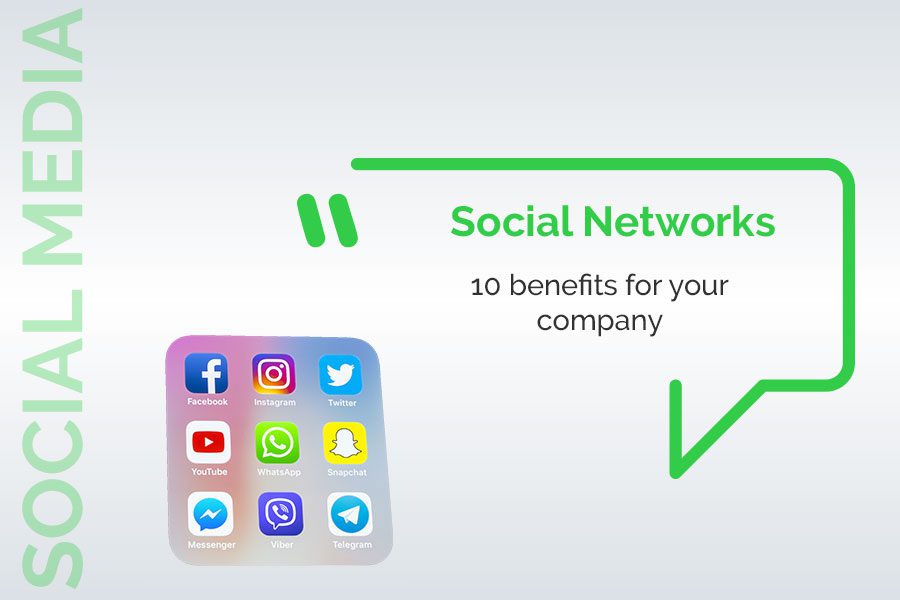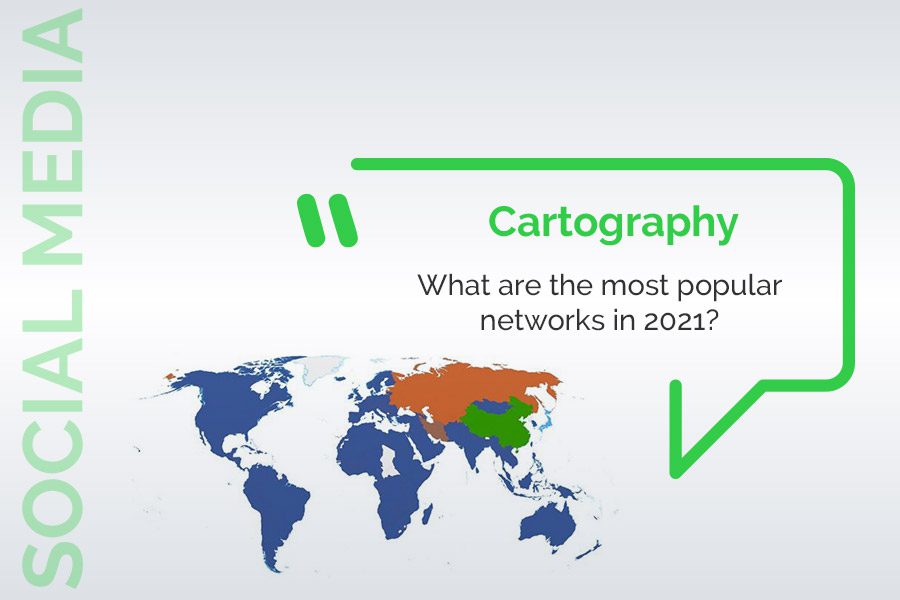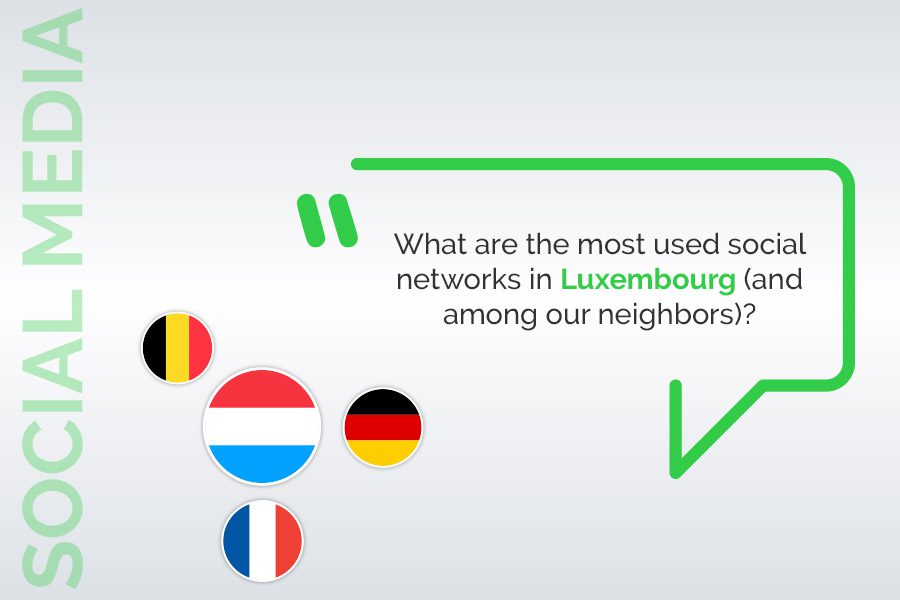
Social networks: What are the benefits for your business?
May 7, 2020
List of most popular social networks in 2021
March 19, 2021

We live in a time where – thanks to digital technology – customers have distanced themselves from traditional business methods. By informing themselves online, they aspire to take control of the sales process and decide for themselves what they want to buy. The meeting with the sales department is postponed further down the decision-making process, or even avoided.
The response of sales departments to this major change is called Social Selling, and as we will see, social networks play an important role in this process.
What is Social Selling?
Social Selling is a form of corporate communication directed towards customers, it can be practiced via a corporate blog and be included in an inbound marketing strategy, but it is especially on social networks that it is most widespread and where it is considered the most effective.
Social Selling consists for salespeople to have an attitude turned towards the needs and expectations of their customers, it therefore requires you to:
- Communicate while bringing added value;
- Create a frank and direct relationship with the consumer;
- Do not impose yourself in an impromptu way by phone or email.

Contrary to traditional sales techniques, the short-term goal of Social Selling is not to sell but rather to create a relationship of trust between the brand or retailer and its customers. This trust allows us to accompany customers in their reflection in order to decide to buy.
Failure to adapt its sales department to these practices runs the risk for a company of no longer being heard and appreciated by its customers. This method becomes the new traditional sales method.

Social Selling is a form of corporate communication directed towards customers, it can be practiced via a corporate blog and be included in an inbound marketing strategy, but it is especially on social networks that it is most widespread and where it is considered the most effective.
Social Selling consists for salespeople to have an attitude turned towards the needs and expectations of their customers, it therefore requires you to:
- Communicate while bringing added value;
- Create a frank and direct relationship with the consumer;
- Do not impose yourself in an impromptu way by phone or email.
Contrary to traditional sales techniques, the short-term goal of Social Selling is not to sell but rather to create a relationship of trust between the brand or retailer and its customers. This trust allows us to accompany customers in their reflection in order to decide to buy.
Failure to adapt its sales department to these practices runs the risk for a company of no longer being heard and appreciated by its customers. This method becomes the new traditional sales method.
What is its importance in the eyes of consumers?
If social networks play a major role in Social Selling, it is because they have become for many consumers the preferred place to form an opinion (by themselves or by taking into account the opinions and comments posted by others). They follow a brand or a brand name to be informed of new products; to take advantage of exclusive content and good deals; to receive personalized advice; to interact with the company. In short, they want to have the information they have chosen before beginning a purchasing process.
Some recent statistics give the measure of this phenomenon: (source @Ecom_NationEN + Hubspot)
- 87% of buyers say that social networks helped them decide what to buy;
- 74% of consumers rely on their social networks to make their purchasing decisions;
- 56% of users who follow brands on social networks do so to see their products;
- 55% of consumers search on social networks for a product or service that interests them.


If social networks play a major role in Social Selling, it is because they have become for many consumers the preferred place to form an opinion (by themselves or by taking into account the opinions and comments posted by others). They follow a brand or a brand name to be informed of new products; to take advantage of exclusive content and good deals; to receive personalized advice; to interact with the company. In short, they want to have the information they have chosen before beginning a purchasing process.
Some recent statistics give the measure of this phenomenon: (source @Ecom_NationEN + Hubspot)
- 87% of buyers say that social networks helped them decide what to buy;
- 74% of consumers rely on their social networks to make their purchasing decisions;
- 56% of users who follow brands on social networks do so to see their products;
- 55% of consumers search on social networks for a product or service that interests them.
What are the benefits of Social Selling for companies?
If the final goal of Social Selling is obviously to increase sales, it induces additional beneficial effects for companies that master this form of communication:
–Lead generation: In order to implement an effective Ledgen strategy, it is necessary to correctly define the profile of the target prospects (the persona in Inbound Marketing language). From these profiles will be derived the type of content necessary to publish in order to attract their attention and convert them into leads. Inbound marketing and marketing automation allow to amplify the reach of these contents and accelerate the conversion of leads into customers.
–Conversion rate: It is obviously in the lead stock – pampered by social sellers – that the future customers are found. Those who are most likely to be converted into customers – there are analysis tools to identify them – will be converted either through targeted messages encouraging them to (re)act: visit the company’s website, Call to Action, links to an e-commerce site…, or through a more direct sales approach (by phone or email) which finds its relevance at advanced stages of the sales cycle in some cases.


If the final goal of Social Selling is obviously to increase sales, it induces additional beneficial effects for companies that master this form of communication:
–Lead generation: In order to implement an effective Ledgen strategy, it is necessary to correctly define the profile of the target prospects (the persona in Inbound Marketing language). From these profiles will be derived the type of content necessary to publish in order to attract their attention and convert them into leads. Inbound marketing and marketing automation allow to amplify the reach of these contents and accelerate the conversion of leads into customers.
–Conversion rate: It is obviously in the lead stock – pampered by social sellers – that the future customers are found. Those who are most likely to be converted into customers – there are analysis tools to identify them – will be converted either through targeted messages encouraging them to (re)act: visit the company’s website, Call to Action, links to an e-commerce site…, or through a more direct sales approach (by phone or email) which finds its relevance at advanced stages of the sales cycle in some cases.
– Reduction of the sales cycle : Social Selling accelerates the maturation of the need and reduces the decision-making time and the cost of acquiring new customers.
– Brand awareness: By giving itself an image adapted to the codes of its target, Social Selling allows a brand to meet prospects earlier in their buying journey.
– Customer knowledge: The information collected on social network subscribers, the opinions and comments they post, the publications they prefer are all valuable information that allows social sellers to adapt their approach and companies to adapt their offer.
– Customer satisfaction: Social networks also serve as a company’s “after-sales service” or “complaints desk”. The attitude and responsiveness of a brand or retailer in answering questions asked are among the most frequently consulted information prior to purchase.
- 67% of the buyer’s journey is now done online, even before the intervention of a sales representative.
- 98% of sales reps who have more than 5,000 connections on LinkedIn meet or exceed their sales quota.
- 79% of sellers who use social networks have better results than those who do not.
- 38% more opportunities are generated by social sellers who engage in interaction than traditional sellers.
- 38% more new opportunities are generated by Linkedin Active Sellers than traditional sellers.
To Conclude.
You will have understood that Social Selling is about selling after having earned and deserved the trust of customers. But to achieve this, the company must change its marketing approach and transform its salespeople into Social Sellers, so it must make major changes in its operating mode. This is why we will discuss in a future article how to implement a winning Social Selling strategy.




